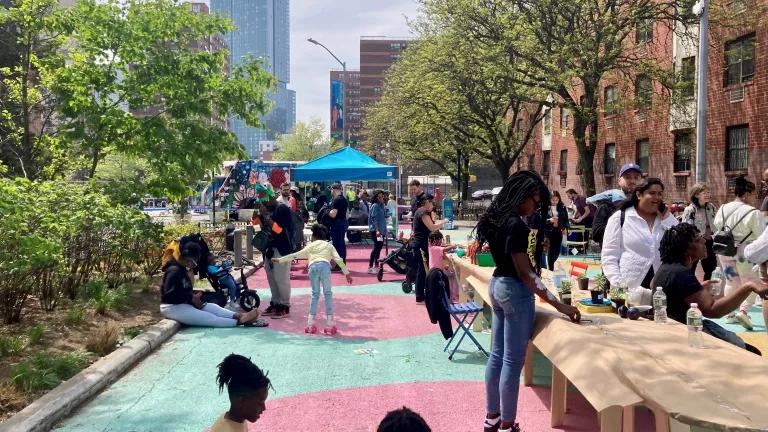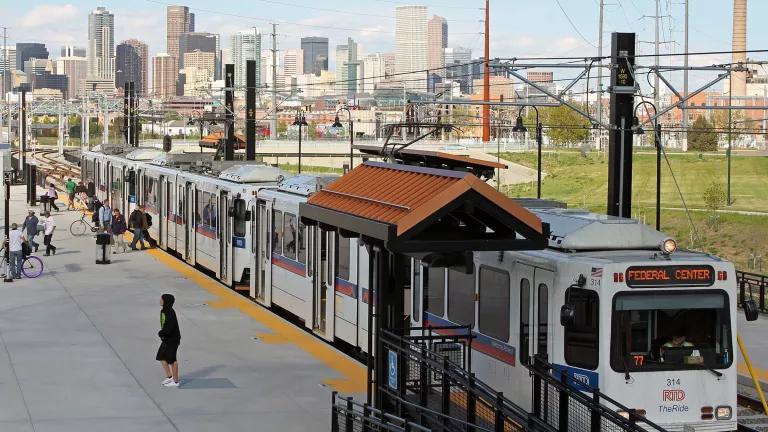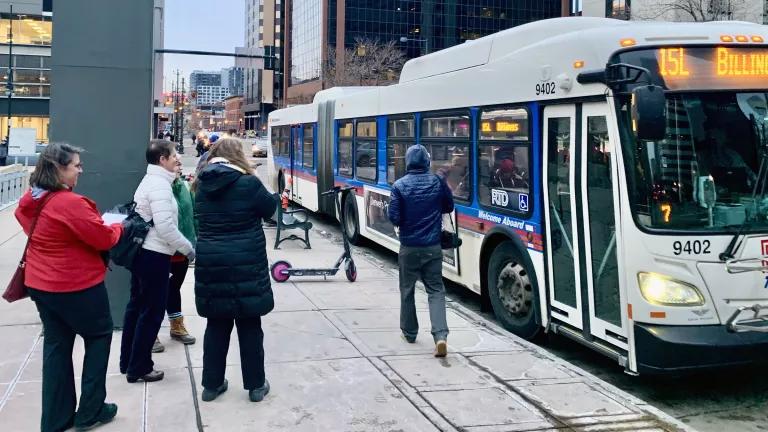
"Brickell Flooding" by Phillip Pessar, shared under CC BY 2.0.
Responding to climate change should bring us together—not divide us with 20 ft seawalls. But that division is exactly what the U.S. Army Corps of Engineers is proposing for Miami-Dade County.
There’s no question that climate change poses a serious threat to the Miami area. Sea levels are rising there faster than the global average. In 2019, the city once again broke its record for the number of tidal flooding events. More than 85,000 people in Miami-Dade County live less than 3 feet above sea level. And communities face not just natural hazards but the social and economic pressures like climate gentrification that come along with them.
Clearly, action is needed. However, the Corps’ Miami-Dade Back Bay Coastal Storm Risk Management Feasibility Study is not the way to go. NRDC recently submitted public comments on the study’s Draft Feasibility Report and Programmatic Environmental Impact Statement, which examines storm surge risk in Miami-Dade County and proposes a “Tentatively Selected Plan” to address that risk. The plan includes a combination of floodwalls, storm surge barriers, home elevations, and floodproofing, plus a small area of mangrove restoration.
There are a number of technical issues with the project. Overall, though, it seems to be an expensive, temporary, and inflexible solution applied to a complex and evolving problem. The U.S. Army Corps of Engineers has a long history of implementing large, expensive, less-than-successful projects that negatively affect communities and ecosystems alike. And the proposed Miami project would be no exception.
There are a few key issues with the proposed project. First, the study’s scope is limited to just coastal storm surge. Storm surge poses a serious threat to Miami, but it is far from the only climate threat that local residents face. It’s not even the only source of flooding; “sunny day” tidal flooding inundates roads and neighborhoods on a regular basis and heavy rainstorms overwhelm local stormwater infrastructure. Flooding can even come from below, as the water table rises in the area’s porous, shallow aquifer. Building walls to keep out the sea (assuming they’re even high enough) does nothing against rain or groundwater and, instead, can trap that water in place.
Second, the distribution of floodwalls, home elevations, and floodproofing creates winners and losers. The Corps bases its planning on a benefit-cost analyses, which compare the cost of a project to the financial losses it prevents. This strategy seems objective and logical, but it drives investment toward higher-value neighborhoods—compounding existing inequities and leaving historically disinvested neighborhoods even farther behind.
Relying on benefit-cost analysis also means the study barely considers the natural and nature-based features favored by local residents and Miami-area governments alike. These “green” approaches (such as protecting or restoring wetlands, dunes, reefs, and mangroves) can be highly effective in protecting against coastal storms. They also provide other environmental, social, and economic benefits. However, the Corps’ calculations don’t fully capture these benefits and—as described on the project website—“these features have been difficult to justify within the U.S. Army Corps of Engineers Planning process.”
Finally, the study doesn’t consider the potential unintended consequences to Miami-Dade County neighborhoods. The Corps makes some effort to incorporate social vulnerability information into its study, but planning interventions in historically disinvested or disenfranchised communities comes with a serious responsibility to ensure the project actually benefits those communities and does not further social, economic, and environmental injustices. It demands deep, meaningful community engagement and real responsiveness to the needs of residents. In its current form, however, the study poses more questions than it answers regarding community disruption, displacement, evacuation impacts, selection of properties for elevation and floodproofing, and financial consequences for other local programs and services.
None of these issues are unique to the Miami project. Instead, they point to underlying problems with how the Corps—and the nation as a whole—approaches climate adaptation and natural hazard mitigation. It’s not as easy as putting up a wall against a single threat and declaring victory. Climate change is a complex, multifaceted social and environmental problem that interacts with all our other complex, multifaceted social and environmental problems. It can’t be considered in a vacuum.
This project represents an important opportunity to address coastal storm risk in Miami-Dade County and may well set an example for other coastal cities across the world. As this project moves forward, we will continue to advocate for the Corps to more closely consider environmental justice, nature-based solutions, and the long-term effects on Miami-Dade’s communities. But we also need bigger, more comprehensive changes to make sure this type of project isn’t our default approach. Climate adaptation must be driven from the ground up, not constrained by top-down policies that don't meet communities' needs.



